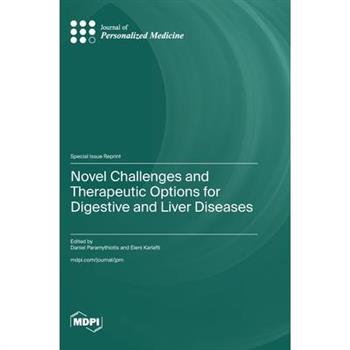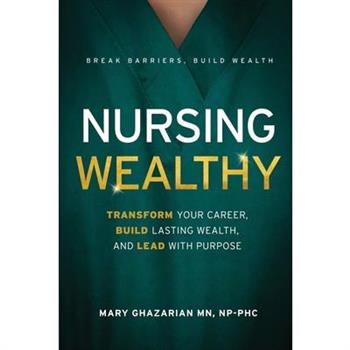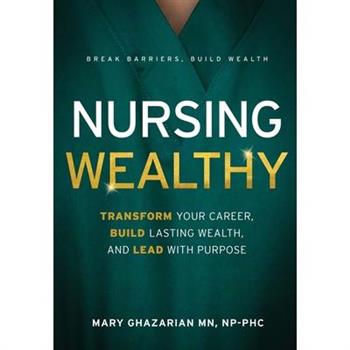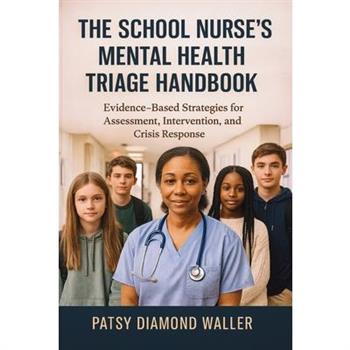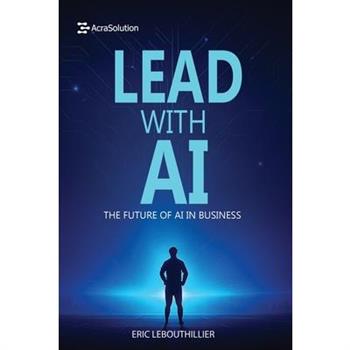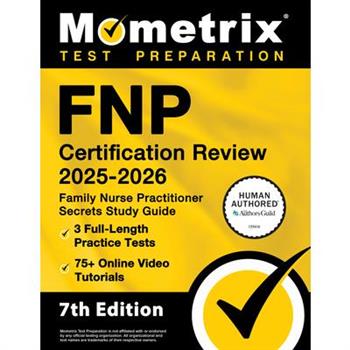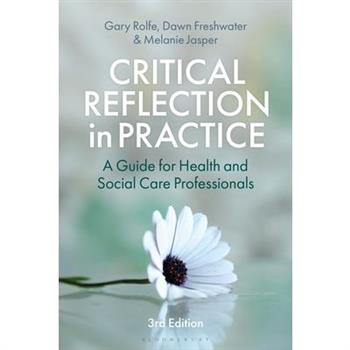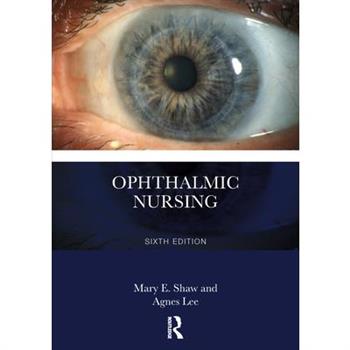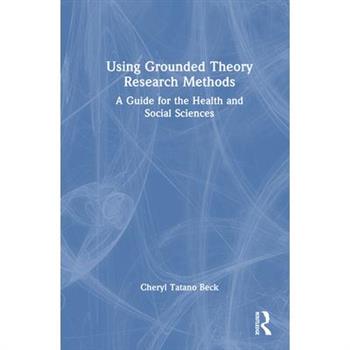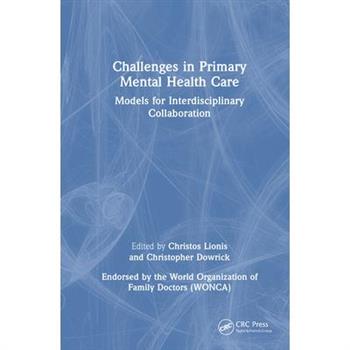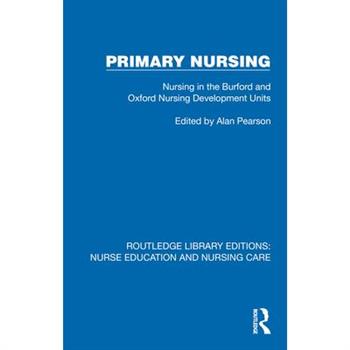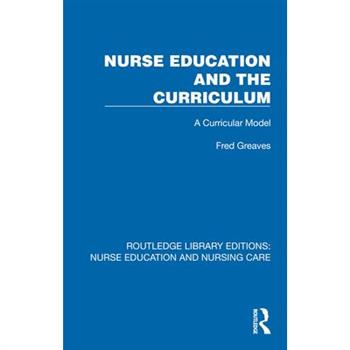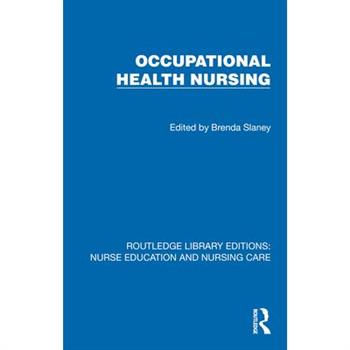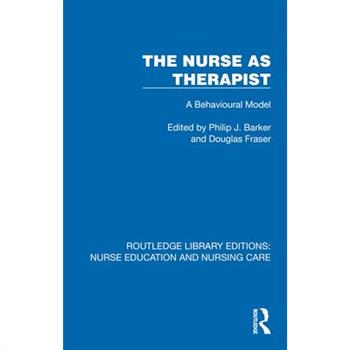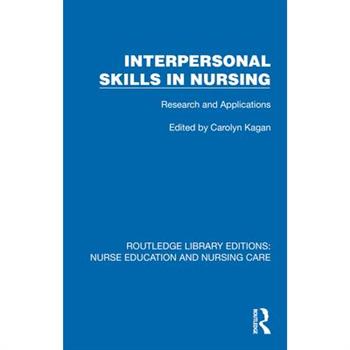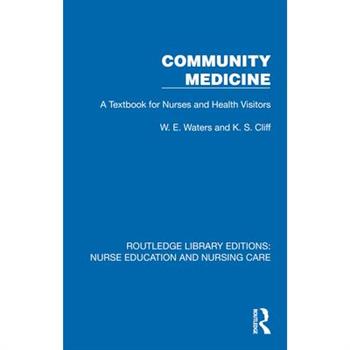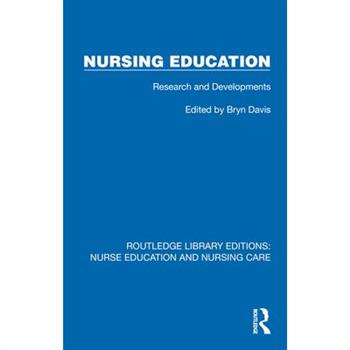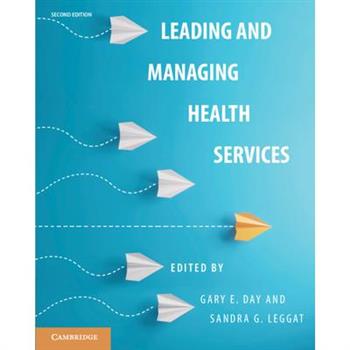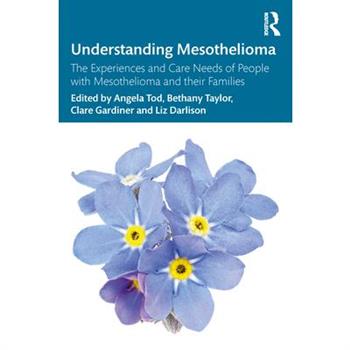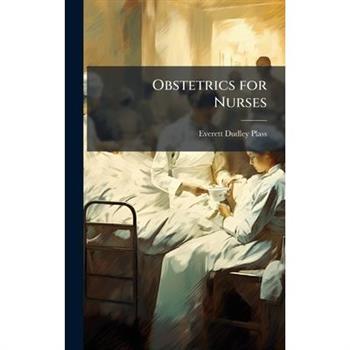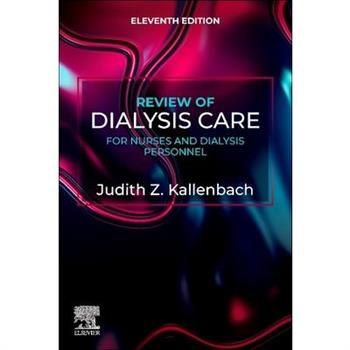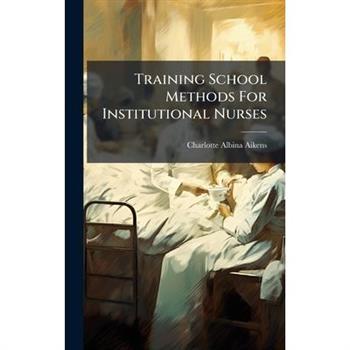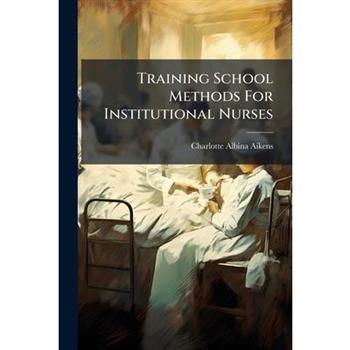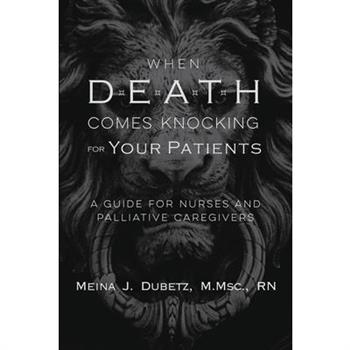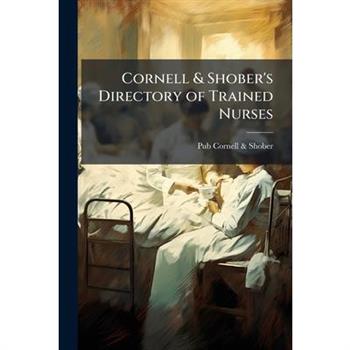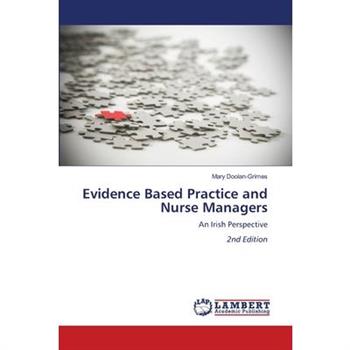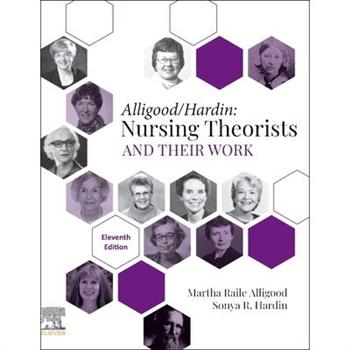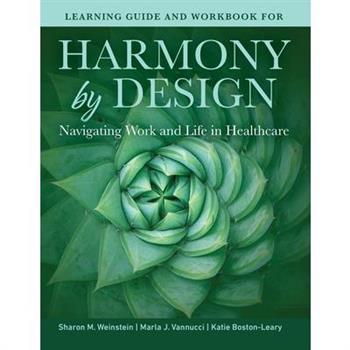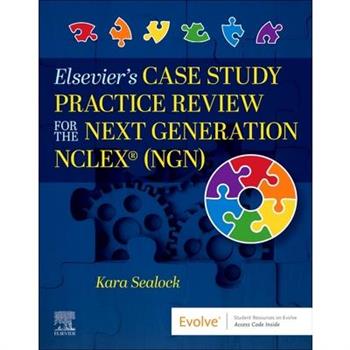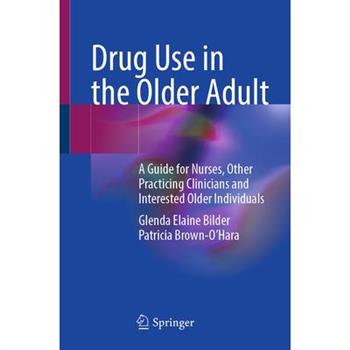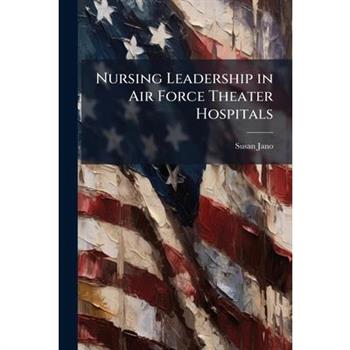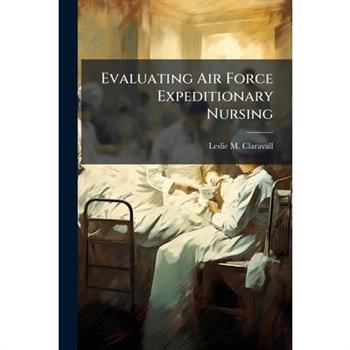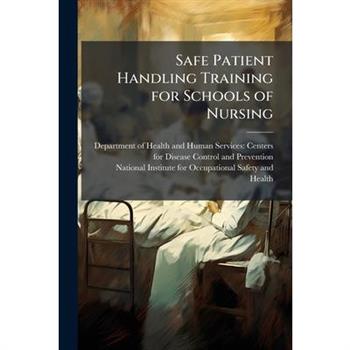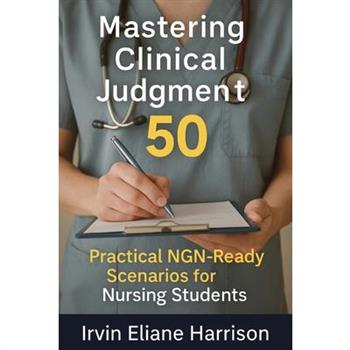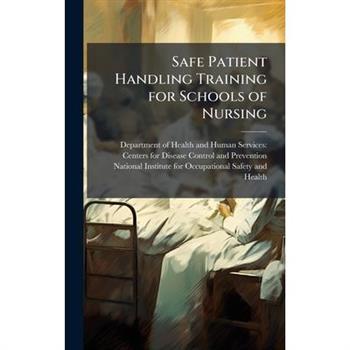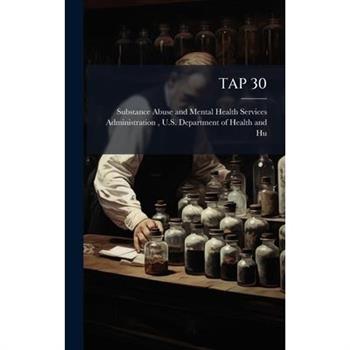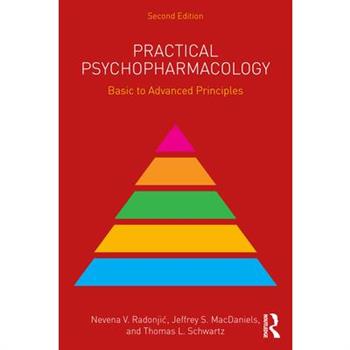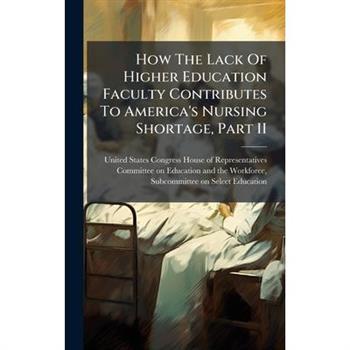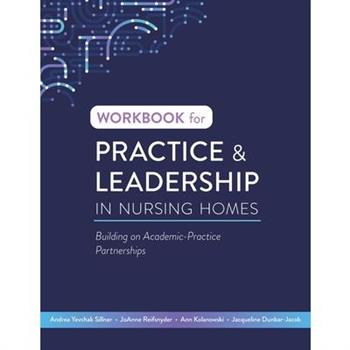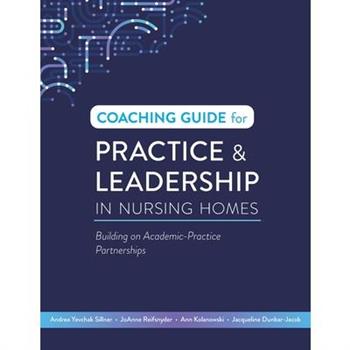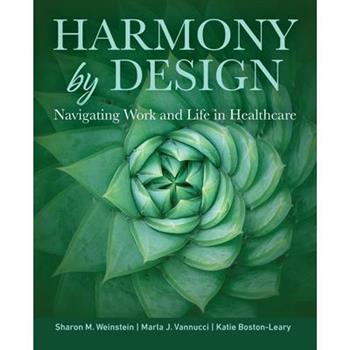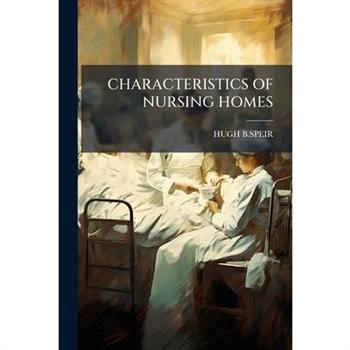The School Nurse's Mental Health Triage Handbook
Lead with AI
Lead with AI is your ultimate guide to thriving as a leader in the age of artificial intelligence. The future of business will not be built by those who wait and react-it will be shaped by leaders who act boldly, inspire people, and harness AI as a force for innovation and growth.This book is written for business leaders, entrepreneurs, managers, and ambitious professionals who want to stand out in a world where technology changes faster than ever. You don't need to be a programmer to succeed with AI-you need the vision, strategy, and mindset to use AI as your ally, not your competitor.Inside Lead with AI, you'll discover a step-by-step playbook that combines practical business strategies with modern leadership frameworks designed for the AI era. You'll learn how to create value, inspire confidence, and drive results in organizations that must evolve-or risk being left behind.What you'll learn in this book: How AI is transforming industries such as healthcare, finance, logistics, and education, and what opportunities you can seize todayThe future of AI in business and why leaders who act now will dominate tomorrow's marketsA modern model for AI-enhanced leadership built on vision, adaptability, ethics, and strategyHow to build AI-ready teams, upskill employees, and lead a workforce that thrives with technologyThe essential AI leader's toolkit: decision support, productivity enhancers, automation, and AI agentsHow to plan and execute digital transformation projects that deliver measurable ROIWhy ethics, trust, and responsibility matter more than ever-and how to lead with integrity in a data-driven worldA 90-day roadmap to begin your AI leadership journey immediately and start creating lasting impactThis book is more than a leadership guide-it's a blueprint for becoming the leader of tomorrow. Whether you are an executive steering a corporation, an entrepreneur scaling a startup, or a professional preparing for the future of work, Lead with AI will give you the clarity and confidence to step forward.The world doesn't just need AI specialists-it needs AI leaders. This is your chance to become one.If you're ready to inspire your team, innovate faster, and lead with confidence in the digital age, this book is your roadmap.
Fnp Certification Review 2025-2026 - 3 Full-Length Practice Tests, 75+ Online Video Tutorials, Family Nurse Practitioner Secrets Study Guide
"Mometrix Test Preparation's FNP Certification Review - Family Nurse Practitioner Secrets Study Guide is the ideal prep solution for anyone who wants to pass their Family Nurse Practitioner Exam. The exam is extremely challenging, and thorough test preparation is essential for success. Our study guide includes: 3 practice tests available in online interactive format (1 of these printed in the guide)Step-by-step video tutorials to help you master difficult conceptsTips and strategies to help you get your best test performanceA complete review of all Family NP test sectionsMometrix Test Preparation is not affiliated with or endorsed by any official testing organization. All organizational and test names are trademarks of their respective owners.The Mometrix guide is filled with the critical information you will need in order to do well on your Family NP exam: the concepts, procedures, principles, and vocabulary that the American Nurses Credentialing Center (ANCC) and American Academy of Nurse Practitioners (AANP) expects you to have mastered before sitting for your exam.The Assessment section covers: Pediatric Illness and Injury PreventionPatient History and Physical AssessmentAssessment of Organ SystemsThe Diagnosis section covers: Pathophysiology of Organ SystemsInfectious DiseaseDiagnostic TestingThe Planning section covers: Nursing Care PlanningPediatric Evidence-Based PracticesPrinciples of Medication AdministrationThe Implementation section covers: Procedures and InterventionsAPRN Scope and StandardsPatient EducationThe Evaluation section covers: Ethical BehaviorEvidence-Based Practice...and much more!Our guide is full of specific and detailed information that will be key to passing your exam. Concepts and principles aren't simply named or described in passing, but are explained in detail. The Mometrix Family NP study guide is laid out in a logical and organized fashion so that one section naturally flows from the one preceding it. Because it's written with an eye for both technical accuracy and accessibility, you will not have to worry about getting lost in dense academic language.Any test prep guide is only as good as its practice questions and answer explanations, and that's another area where our guide stands out. The Mometrix test prep team has provided plenty of Family NP practice test questions to prepare you for what to expect on the actual exam.
Critical Reflection in Practice
Critical reflection and reflective practice are at the heart of modern healthcare. But what do these terms really mean? This textbook analyses and explores the significance of reflection in professional health and social care practice. Taking an interdisciplinary approach, this book presents a structured method that empowers you to both challenge and develop your own practice. New to this edition: - Updated to reflect global developments in contemporary understandings of reflective practice- A brand-new chapter on reflective and reflexive practice- Engaging chapter exercises and 'key takeaway' features to reinforce and support learning Containing real-life case studies and reflective activities, this book is an essential guide to critical reflection for all students, academics and practitioners alike, enhancing both personal and professional development.
Ophthalmic Nursing
Ophthalmic Nursing provides an overview for those setting out in a role within ophthalmic nursing. It includes essential anatomy and physiology - the foundations for understanding how the eye functions and why and how problems occur - and relates them to the care and needs of the patient. This clearly presented text draws on the most up-to-date evidence-based guidelines and the inclusion of colour images, reflective questions and exercises throughout allows readers to apply their knowledge to the realities of the care setting. Beginning with chapters on practising as a nurse and the ophthalmic patient, the book goes onto outlines the basics of an eye examination before introducing eye health and ill-health in different parts of the eye, and covering issues such as glaucoma and trauma. It ends with a chapter focusing on ophthalmic drugs and includes two entirely new chapters on multi-professional ophthalmic-led clinics and vision rehabilitation.A valuable resource for nurses and healthcare professionals in practice and training, this book continues to be the 'go-to' source for those caring for the ophthalmic patient.
Using Grounded Theory Research Methods
This practical text introduces and compares all the different varieties of grounded theory for researchers new to the methodology from across the health and social sciences. Grounded theory is a complex research methodology, further complicated by the existence of a number of different variations.Method slurring is a common problem and this thoughtful textbook enables readers to understand and use grounded theory correctly, with chapters focusing on: Barney Glaser's Grounded Theory; Anselm Strauss and Juliet Corbin's Grounded Theory; Leonard Schatzman and Barbara Bowers' Dimensional Analysis; Kathy Charmaz's Constructivist Grounded Theory; Adele Clarke's Situational Analysis. It includes a comparison of first- and second-generation grounded theory approaches and includes an interdisciplinary selection of examples. Each chapter includes tips for researchers, activities and a summary highlighting the strengths and limitations of the grounded theory approach in question.This text is an essential read for researchers with an interest in grounded theory or advanced students taking qualitative research methods courses.
Ovarian Cancer
This volume is the first of a new series dedicated to the historical developments in topics that are central to gynecological cancers. The six essays on ovarian cancer contained here provide context from the perspective of experts in the field, illustrating what is required for the development and realization of medical innovation: time consuming, decades-long basic research of the tumor genome and cancer cell biology, which may then set the basis for dramatic accelerations of recent therapeutic options; and the diligent assessment and fine-tuning of surgical techniques and concepts of patient prehabilitation and rehabilitation.
Challenges in Primary Mental Health Care
This insightful and timely book equips family doctors and other primary health care professionals with the knowledge and skills needed to address a diverse range of new and important challenges in the field of primary mental health care, including ongoing impacts from the COVID pandemic, thanatophobia and end-of life care, humanitarian and geopolitical catastrophes, and the effects of climate change.There is an emphasis throughout on the need to encourage and so reap the benefits of interdisciplinary collaboration, between family doctors and mental health specialists and across the range of primary care and community workers. Effective primary health care relies increasingly on the use of remote consultations, and the book explains how the potential of remote working can be maximised in low resource settings. The book concludes with a consideration of how to protect and enhance the mental health of primary care workers in the face of these on-going challenges care.Key Features: - Global and inclusive, providing practical guidance and direction across low- middle- and high-income settings, satisfying the needs of all primary care practitioners regardless of geography- Focused on key and immediate challenges for primary care practitioners arising from the COVID-19 pandemic, poverty and social inequality, migration and climate change- Addresses the vital importance of self-care by and of primary health care workers facing unprecedented work and emotional pressuresReflecting the expertise of the WONCA Working Party for Mental Health (WWPMH), building on the foundations laid in the 2020 WONCA volume Global Primary Mental Health Care, the editors and contributors all have expertise in primary mental health care at the frontline, with backgrounds in family medicine, psychiatry psychology and nursing.
Primary Nursing
Primary nursing is a system of care which reinstated the skilled professional nurse at the forefront of practical nursing care. Originally published in 1988, this book presents an argument, based on contemporary literature and on the practice in the former Burford and Oxford nursing development units, to support the introduction of primary nursing and nursing beds in general hospitals. It focuses on the philosophy of individualised patient care delivered by a professional nursing service and based on a close, therapeutic relationship between nurse and patient. Innovations included the abandoning of stereotyped nurse uniforms, the sharing of mealtimes by patients and nurses, and the use of therapeutic touch and massage. Having been implemented and evaluated, the units enjoyed an international reputation.
Nurse Education and the Curriculum
The nursing process, the curriculum process and theoretical nursing models are essential areas of concern for those nurses who are involved with the design, planning and implementation of nurse educational programmes. Originally published in 1984, this book reviews and brings together appropriate elements of these three areas. A critical analysis of nursing theory, and relationship of theory to practice, and an overview of nursing models is presented along with an examination of general curriculum theory and practice and nursing applications.
Occupational Health Nursing
When this book was originally published in 1980, the speciality of occupational health nursing was only just beginning to be recognised by the nursing profession and the public although nurses had been doing the job for over one hundred years. One of the reasons for this may well have been the lack of nursing literature dealing with the subject. This book, written by tutors of Occupational Health Nursing Certificate Courses and practitioners in industry considers topics and concepts that give the specialism its unique character.
The Nurse as Therapist
This book, originally published in 1985, is intended to complement Philip Barker's previous book Behaviour Therapy Nursing. The latter focussed more on the principles of the behavioural approach to nursing, while this book adopts a more practical approach. It is also shown that the proposed model can be extended beyond psychiatric and learning disabilities into general nursing. In the first part of the book the range of settings in which various therapeutic approaches can be used is set out, including work in the community. Emphasis is also given to the nurse's role in social skills training and in the development of everyday living skills for the rehabilitation of the mentally ill and disabled. The second part of the book presents case studies, each describing how the nurse assesses the patient and plans and implements the treatment. The emphasis is on practical illustration of the behavioural approach to different clinical problems in different patient populations in various treatment settings. At the end of each study there is discussion of possible alternative treatment strategies and the general applicability of the case.
Interpersonal Skills in Nursing
Originally published in 1985, this book locates interpersonal skills in nursing in both social psychological and nursing contexts. It exposes nurses and nurse educators to different strategies for assessing, teaching and evaluating interpersonal skills and examines those aspects of specialised nursing care that raise particular issues in the field of interpersonal skills. The book thus combines reports of specific research studies with practical applications.Aimed at nurse educators ranging from tutors and those involved in training in specific nursing specialities to psychologists the book will be of relevance to advanced students, interested in interpersonal aspects of nursing and to practitioners.
Community Medicine
Originally published in 1983 this book gives a basic grounding in community medicine and epidemiology for district, community psychiatric and other nurses and health visitors. It provides the background necessary to an understanding of how diseases occur and spread in populations, and to an appreciation of the possible planning and prevention that such health professionals can undertake. Although the book focuses on medicine and epidemiology, it is written specifically for nurses and health visitors, and throughout a conscious effort is made to relate the discussion to practical work. The book selects as illustrative case studies the topics of coronary heart disease, renal disease, accidents and psychiatric conditions.
Nursing Education
Originally published in 1987 this book presents a number of research-based studies in nursing education, concentrating particularly on the nursing curriculum and its planning, content implementation and evaluation. Some of the chapters report on specific research projects whilst others are more general reviews. The book is written by leading researchers in nurse education in the UK and will be of interest to nurse tutors and teachers and researchers.
Leading and Managing Health Services
Including perspectives from across various health sectors, Leading and Managing Health Services considers the fundamental leadership and management skills students need to successfully navigate change and innovation in health service settings. The second edition has been updated to reflect changes to the health services industry in recent years. Two new chapters on empathic leadership and leading and managing in the digital age cover concepts including compassionate care, digital health, artificial intelligence and telehealth. Each chapter includes definitions of key terms for easy reference, contemporary case studies to provide relevant industry perspectives and end-of-chapter reflective and self-analysis questions for deeper student engagement. Written by leading academics and industry experts, Leading and Managing Health Services provides students with practical skills to lead and manage in a wide range of healthcare settings, no matter where they sit in the organisational structure.
Understanding Mesothelioma
This practical text highlights the lived experience of mesothelioma. Following the patient journey and underpinned by the evidence, it explores what good care for mesothelioma looks like. Mesothelioma is complex in its aetiology, presentation, symptom burden and patient pathway. The public health context is shifting, as the way people are exposed to asbestos changes and there are new life-lengthening treatments available with many benefits but also challenges.This timely book provides the context for mesothelioma, what it is and why it occurs before profiling a range of experiences across the patient pathway to highlight implications for care delivered by nurses and other health and social care practitioners. The second section of the book follows the patient pathway from diagnosis through to end-of-life care and bereavement, highlighting the lived experience and summarising the implications for practice. The final section of the book discusses aspects about the mesothelioma experience that are unique to the condition, including mental health impacts, and financial and legal implications.Presenting insights that will inform practice in a diverse range of fields, including health, social care and law, this book is an essential reference for all those working with people with mesothelioma and their families. It is also an important reference for those working in cancer care more generally and academics with an interest in the lived experience of health conditions.
Training School Methods For Institutional Nurses
Training School Methods For Institutional Nurses
Evidence Based Practice and Nurse Managers
Nursing Theorists and Their Work
Understand the thinking of 39 leading nursing theorists in one comprehensive text! Nursing Theorists and Their Work, Eleventh Edition, provides a clear, in-depth look at nursing theories of historical and international significance. Each chapter presents a key nursing theory or philosophy, showing how systematic theoretical evidence enhances decision making, professionalism, and quality of care. Lead author Martha Raile Alligood is known nationally and internationally for her expertise in nursing theory. A classic in the field of nursing theory, this text uses objective critiques, case studies, and critical thinking activities to bridge the gap between nursing theory and application in the practice of nursing.NEW! Information on the state of nursing in health care after COVID-19 illustrates how nursing knowledge development continues to evolve, with new theories that address current health care needs for quality nursing careTheorist chapters written by scholars specializing in that theorist's work - often having worked closely with the theorists - provide the most accurate and complete information possibleCase studies at the end of each theorist chapter present the theory in a larger perspective, demonstrating how it can be applied in practiceCritical thinking activities at the end of each theorist chapter help you to process the theory presented and apply it to personal and hypothetical nursing practice situationsTheory-specific diagrams help you visualize and better understand inherently abstract concepts and their relationshipsMajor Concepts and Definitions boxes outline a theory's most significant ideas and clarifies vocabularyBrief summary sections offer valuable review for tests and validate comprehensionPoints for Further Study sections direct you to sources of additional informationA diagram in each unit illustrates the level of abstraction of the theoretical knowledge presentedNew information on international theorists will be includedNew information the topic of clinical reasoning and judgment and how it relates to the various theories presented will be includedThe new AACN Essentials will be addressed and included where appropriate throughout the text
Practical Psychopharmacology
Practical Psychopharmacology, 2nd ed, takes the novel approach of writing at three different levels--beginning, intermediate, and advanced--to give the practicing psychopharmacologist a tailored experience.Each chapter focuses on a specific DSM-5TR disorder and outlines abbreviated treatment guidelines to help the reader understand where their knowledge base and clinical practice currently reside. At the first level, the book teaches novice prescribers practical diagnostic skills and provides a brief overview of pertinent genetic and neuroimaging findings to increase prescribing confidence. Next, it provides mid-level clinicians with intermediate techniques and guidelines for more difficult cases. The final level provides nuanced guidance for advanced practitioners or those who see the most treatment-resistant patients.This approach allows a clinician to access this book periodically throughout the care of an individual patient and to gradually progress through a series of more advanced psychopharmacological techniques for making accurate and efficient diagnoses.
Learning Guide and Workbook for Harmony by Design
This Learning Guide and Workbook is devised to be used alongside Harmony by Design: Navigating Work and Life in Healthcare as a valuable resource for teaching and learning. Like the main book, it builds on the concept of embracing harmony so individuals and teams can thrive with intention-aligning values, goals, and daily actions to create a life that feels whole and sustainable.About the main book: Harmony by Design: Navigating Work and Life in Healthcare reimagines how we approach well-being in a fast-paced, high-pressure world. Rather than striving for a rigid sense of balance, this book introduces a more flexible and fulfilling concept: harmony. It's about aligning your values, goals, and daily actions to create a life that feels whole and sustainable.Authors Sharon M. Weinstein, Marla J. Vannucci, and Katie Boston-Leary blend practical tools with thoughtful reflection, drawing from the latest nursing competencies and real-world challenges to help readers manage stress, lead with empathy, and build meaningful careers without sacrificing personal well-being.Harmony by Design is more than a guide-it's a blueprint for living and leading with clarity, compassion, and purpose. Whether you're a healthcare professional, leader, or student, this book offers the tools and mindset for you to thrive in both your work and your life.Also available: Learning Guide and Workbook for Harmony by Design, including tools, activities, and resources to help put harmony concepts into practice.
Elsevier's Case Study Practice Review for the Next Generation NCLEX (Ngn)
Use case studies and practice exams to prepare for the Next Generation NCLEX-RN(R)! Designed for nursing students, Elsevier's Case Study Practice Review for the Next Generation NCLEX(R) (NGN) provides step-by-step advice and concrete methods to solving case studies and targeted questions that help you build critical thinking and clinical judgement skills. A combined total of 130 stand-alone and unfolding case studies are offered in the book and its Evolve website, with rationales for correct and incorrect answers, the clinical judgement skill being tested, and Elsevier text references for further learning. Written by noted educator Kara Sealock, this review ensures that you are ready for success on the NGN and in your nursing career.Review content reflects the new 2023 Next Generation NCLEX(R) (NGN) test plan and its emphasis on clinical judgement cognitive skillsCase studies for the NGN prepare you for the biggest change to the NCLEX-RN(R) test plan to date - the addition of questions measuring clinical judgement skillsTwo in-text practice exams include 100 stand-alone and unfolding case studies for the NGN, giving you plenty of testing practice with critical thinking and clinical judgement skillsCase studies on the Evolve website include all case studies from the book in interactive format plus 30 additional case studies, creating a virtually unlimited number of practice sessions or tests in Study Mode or Exam ModeIn-depth rationales are provided for both correct and incorrect answers to each questionAnswer keys for each practice test
Drug Use in the Older Adult
This book, written by a pharmacologist and a nurse, discusses issues related to drug use in the older adult. It discusses the effects of medications as well as other drugs (OTC, recreational, anti-aging) in the aging body but also the effects of drug use in age-related diseases. The purpose is two-fold. The first is to present a comprehensive evaluation of drug use in the older adult based on principles of pharmacology and gerontology and validated by clinical observations, reviews and trials. Professional care givers for the older adult - nurses, other practitioners, and technicians will benefit by learning the many ways in which age and age-dependent diseases influence medication efficacy, adverse reactions and toxicities. Understanding these relations creates the opportunity to improve efficacy and minimize adverse and toxic reactions and provide optimal health care. The book discusses drug use in a wide variety of age-related diseases, syndromes and conditions. The second purpose is to present a readable reference for the interested older adult on all types of drug use - medications to recreational to anti-aging drugs. This book provides scientifically validated information on current drug topics that are usually covered by unsubstantiated marketing information.
Nursing Leadership in Air Force Theater Hospitals
Safe Patient Handling Training for Schools of Nursing
Mastering Clinical Judgment
Transform your clinical reasoning skills with the most comprehensive clinical judgment resource designed specifically for Next Generation NCLEX success. This extensive collection of 50 progressive scenarios guides nursing students from foundational concepts through expert-level decision-making using the NCSBN Clinical Judgment Measurement Model framework. Master Clinical Judgment Through Systematic Practice Each scenario presents real-world patient situations across cardiovascular, respiratory, gastrointestinal, endocrine, and multi-system conditions. Students develop critical thinking skills by working through beginner-level single-system problems, advancing to intermediate multi-system scenarios, and culminating with complex ethical and leadership challenges that mirror professional nursing practice. NGN Format Integration Throughout All scenarios feature authentic Next Generation NCLEX question formats including bowtie questions, trend analysis, matrix grids, drag-and-drop sequencing, and highlighting exercises. Detailed rationales explain both correct answers and clinical reasoning processes, helping students understand not just what to do, but why expert nurses make specific decisions. Progressive Skill Development Framework Beginner Scenarios (1-20): Single-system focus with clear protocols Intermediate Scenarios (21-35): Multi-system involvement requiring prioritization Advanced Scenarios (36-50): Complex cases demanding leadership and ethical reasoning Evidence-Based Clinical Reasoning Every scenario aligns with the six cognitive functions of the NCSBN Clinical Judgment Measurement Model: recognize cues, analyze cues, prioritize hypotheses, generate solutions, take action, and evaluate outcomes. This systematic approach builds the clinical reasoning patterns essential for both examination success and professional practice. Comprehensive Coverage for Complete Preparation Scenarios span essential nursing content areas including basic safety protocols, medication management, cardiovascular emergencies, respiratory complications, multi-system failures, and ethical decision-making situations. Each presents complete patient stories with progressive data, decision points, and detailed explanations that connect theoretical knowledge with practical application. Bridge Theory to Practice Detailed answer keys provide comprehensive rationales linking clinical decisions to evidence-based practice guidelines. Students learn to integrate assessment skills, clinical reasoning, and therapeutic interventions while developing the professional judgment that characterizes expert nursing practice. Perfect for nursing students preparing for Next Generation NCLEX, clinical rotations, or seeking to strengthen clinical reasoning abilities. Also valuable for nursing faculty, preceptors, and healthcare professionals pursuing specialty certifications or continuing education requirements. Key Features: 50 comprehensive clinical scenarios across all major nursing content areas Complete NGN question format integration with detailed rationales Progressive complexity from novice through expert levels CJMM framework alignment for systematic clinical reasoning development Multi-system integration reflecting real-world nursing practice complexity
Escape Bedside Burnout
Escape Bedside Burnout The Complete Guide to Building a Six-Figure Legal Nurse Consulting Practice Tired of nursing burnout? Ready to escape the bedside and build a career that pays what you're worth? Legal nurse consulting offers registered nurses the ultimate career transformation - earning $75-150 per hour analyzing medical records, serving as expert witnesses, and helping attorneys understand complex healthcare cases. No additional degrees required, just your existing nursing expertise. Inside This Complete Guide: Step-by-step certification pathways (LNCC vs CLNC comparison) Business setup templates and pricing strategies Real case studies from successful nurse consultants earning $150K+ Marketing systems that attract attorney clients Technology tools for remote consulting practice Expert witness preparation and testimony techniques Perfect for nurses experiencing: ✓ Chronic burnout and job dissatisfaction ✓ Desire for professional autonomy and better work-life balance✓ Need for higher income without returning to school ✓ Interest in using clinical expertise in new ways Transform your nursing background into a lucrative consulting practice. Join thousands of nurses who've escaped bedside burnout and built thriving legal consulting careers. Start your journey from exhausted employee to six-figure entrepreneur today.
Safe Patient Handling Training for Schools of Nursing
Practical Psychopharmacology
Practical Psychopharmacology, 2nd ed, takes the novel approach of writing at three different levels--beginning, intermediate, and advanced--to give the practicing psychopharmacologist a tailored experience.Each chapter focuses on a specific DSM-5TR disorder and outlines abbreviated treatment guidelines to help the reader understand where their knowledge base and clinical practice currently reside. At the first level, the book teaches novice prescribers practical diagnostic skills and provides a brief overview of pertinent genetic and neuroimaging findings to increase prescribing confidence. Next, it provides mid-level clinicians with intermediate techniques and guidelines for more difficult cases. The final level provides nuanced guidance for advanced practitioners or those who see the most treatment-resistant patients.This approach allows a clinician to access this book periodically throughout the care of an individual patient and to gradually progress through a series of more advanced psychopharmacological techniques for making accurate and efficient diagnoses.




